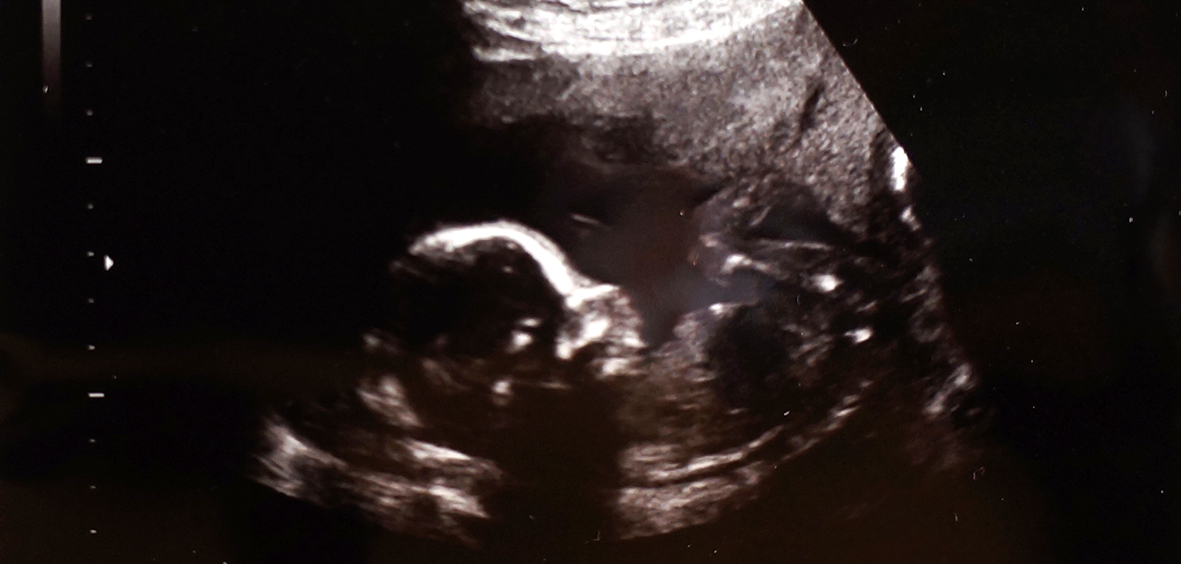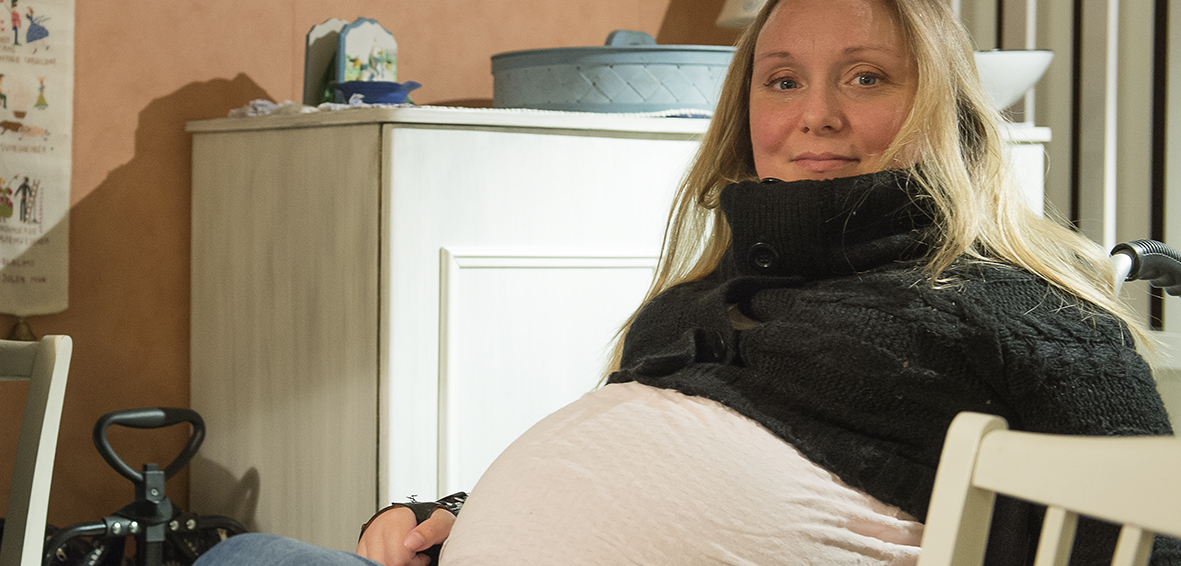Pregnancy
There are no obstacles that prevent a woman with spinal cord injury from becoming pregnant. Studies show that a woman with spinal cord injury has the same prospects to give birth to a completely healthy child as a woman without spinal cord injury. However, certain complications may be more common, such as an increased risk of blood clot, urinary tract infection, autonomic dysreflexia and pressure ulcers.
A woman with spinal cord injury who is considering becoming pregnant and the complications this may entail should contact a high-risk pregnancy center for pre-pregnancy counseling. This counseling session addresses what can be expected during pregnancy and whether any measures should be taken prior to pregnancy (for example, a review of medications).
The general recommendation is that pregnant women with spinal cord injury should be monitored at a high-risk pregnancy center. The high-risk pregnancy center formulates a pregnancy plan for any additional monitoring or examinations that may be considered necessary, and determines whether vaginal childbirth or cesarean section is preferable. However, it is also reasonable to go to a regular pregnancy center with the follow-ups, examinations, parent education, etc. that are part of the usual prenatal care program. Many women with spinal cord injury have completely uncomplicated pregnancies and do not require high-risk pregnancy services. It may also be appropriate to maintain contact with the spinal cord injury unit for questions regarding the spinal cord injury, the need for new adaptive equipment, etc. Ideally, your obstetrician and rehabilitation specialist should discuss your pregnancy and potential complications.

Medications
Medications should be reviewed prior to pregnancy because many common drugs can increase the risk of fetal distress. Examples include antispasmodics, bladder relaxants and painkillers. (Benzodiazepines, carbamazepine, tetracyclines and anti-inflammatory medications). However, this should be done in consultation with a physician who can weigh the risk of fetal distress against the woman’s need for the medication. For concerns about the effect of a medication in pregnancy, contact a high-risk pregnancy center and the spinal cord injury unit for pre-pregnancy counseling.
Urinary tract
Pregnancy affects urinary bladder function. The risk of urinary tract infection is twice as high for a pregnant woman as for a non-pregnant woman. The hormone progesterone relaxes the smooth muscles of the ureters, which causes the urine to flow more slowly from the kidneys to the bladder. The pressure of the growing uterus on the bladder also slows urine flow, while making it more difficult to completely empty the bladder. As a result bacteria have more time to multiply in the urine before being flushed out. Residual urine (urine remaining in the bladder) increases the risk of urinary tract infection.
Non-pregnant women are usually treated only for urinary tract infections that cause symptoms. However, in pregnant women, asymptomatic infections increase the risk of triggering premature birth. The reason is that in pregnancy, urinary tract infections may often travel back up through the ureters into the kidney and cause infection there. A kidney infection causes the release of inflammatory substances throughout the abdominal cavity that can trigger premature labor. Therefore frequent urine cultures are important, at least in connection with prenatal checkups, to detect and prevent possible infection at an early stage. Pregnant women with spinal cord injury who have problems with recurrent urinary tract infections are often given antibiotics to prevent these problems.
Intestinal problems
Problems associated with intestinal disorders may increase during pregnancy. Uterine pressure on the rectum may cause increased constipation in some women, while others may have increased problems with anal incontinence. A full intestine can increase spasticity and uterine contractions. Constipation is common among pregnant women and may be made worse by spinal cord injury. The condition can be prevented or treated by high-fiber diet, adequate fluid intake and medications. It is also common for pregnant women to receive iron supplements, which add to the constipating effect. To avoid this problem, iron supplements may need to be given intravenously instead of by mouth. Painful hemorrhoids that increase spasticity may arise during late pregnancy.
Autonomic dysreflexia
People with spinal cord injury above the T6-8 level may develop autonomic dysreflexia (AD). This condition is triggered by painful stimuli below the level of injury such as bladder distension, pressure, constipation, inflammation of the skin or nails, and tight clothing. Childbirth is a major triggering factor, but various conditions associated with pregnancy increase the risk, such as urinary tract infections, constipation, uterine pressure and Braxton Hicks contractions.
AD causes blood pressure to rise sharply. Symptoms include throbbing headache, skin redness above the level of injury, nausea, heart arrhythmia and visual disturbances. The condition is countered by avoiding or removing the triggering factor. The recommendation is to keep the person seated in an upright position to minimize pressure to the brain. You should ease tight clothing and shoes. If these measures are insufficient, blood-pressure lowering medication may be required. Such medications can be given to pregnant women and do not harm the fetus.
Preeclampsia and autonomic dysreflexia cause similar symptoms. It is therefore important to make the right diagnosis to determine which condition is present. It may be worth noting that blood pressure tends to normalize between contractions in an individual suffering from autonomic dysreflexia during childbirth. In contrast, high blood pressure is more persistent in individuals with preeclampsia. Both conditions can be life-threatening if left untreated.

First trimester
More frequent bladder emptying
As the uterus grows, pressure on the bladder increases, which requires the bladder to be emptied more often. This condition begins early in pregnancy and can affect all women, regardless of whether they have a spinal cord injury. However, it may be more problematic for a woman with a spinal cord injury who has incontinence problems and extra incontinence protection may be needed.
Risk of blood clot
Spinal cord injury increases the risk of blood clots due to increased sitting and decreased circulation. Pregnancy also increases the risk of blood clot. Treatment with injectable blood thinning medications may become necessary during pregnancy and for up to six weeks after childbirth. The obstetrician will make an individual assessment about whether blood thinners are necessary and if so, for how long. Drugs are available that do not cross the placenta or appear in breast milk.
Adaptive equipment
It may be wise to review adaptive equipment early in pregnancy and consider whether additional equipment may become necessary as the body grows and changes. Examples of such adaptive equipment include a sliding board to facilitate transfers, reaching aids to be able to grasp objects when the stomach gets in the way, a wider wheelchair and extra pressure-relieving cushions.

Second trimester
Body changes
Later on in pregnancy wheelchairs and other aids should be reviewed and adapted to a changing and heavier body. Pressure ulcers are a common and troublesome complication for anyone with spinal cord injury, but as the body undergoes change it is even more important to be on the alert for this condition. As the body and center of gravity change, transfers may also become more difficult. Therefore additional adaptive equipment or individual assistance may be needed for some transfers. A sliding board to simplify transfers may be helpful.
Exercise continues to be important during pregnancy to avoid loss of function and problems with contractures (tight muscles). A good idea is to consult a physical therapist for advice on exercises and activities that can be done despite a growing stomach. According to current recommendations, pregnant women should get at least 30 minutes of daily exercise.
Weight gain
All pregnant women gain weight, but it is particularly important for women with spinal cord injury to keep an eye on their weight. Weight gain limits mobility and it becomes more difficult to lose weight after childbirth. Therefore it may be desirable to consult a dietician or doctor to formulate a diet plan.
Swelling
As pregnancy progresses, the uterus applies pressure to the veins in the groin, which increases the risk of swelling in the legs and varicose veins. Prolonged sitting also increases the risk of swelling. Elevation of the legs several times daily and use of compression stockings can help to minimize these problems. Lying on your back for prolonged periods is not recommended in late pregnancy because the uterus can apply pressure to the large veins, which can cause a drop in blood pressure. Low blood pressure is uncomfortable for the woman, but may also impair blood circulation to the placenta and adversely affect fetal well-being.

Third trimester
Breathing
As the uterus grows, it displaces other organs, including the lungs. This may pose an extra burden, especially for women with high-level spinal cord injuries that affect the respiratory muscles. Injuries above T5 affect the abdominal muscles, which contribute to breathing, while injuries above T1 also affect the chest muscles. In some cases, treatment with oxygen may be needed in late pregnancy and during childbirth. For example, some women may need treatment with oxygen at night. Such treatment is especially appropriate in tetraplegia/quadriplegia since only the diaphragm muscles can be used for breathing. If the woman has significant oxygenation problems during late pregnancy, her doctor may choose to deliver the child somewhat early.
Labor
Women with complete injuries above T10 usually do not experience the “normal” labor pain associated with contractions. However, the body often displays other signs that something is going on, such as vague stomach discomfort, increased spasticity, nasal congestion, slight rise in blood pressure or even autonomic dysreflexia. Labor commonly begins with a change in vaginal discharge that is often blood-tinged. However, in some cases labor may begin without the woman realizing it. It is therefore important to be extra alert for body signals that something is happening and contact labor and delivery at the hospital, or the pregnancy center if you suspect that labor is about to begin. It is important for the pregnant woman to feel secure in the situation.
This text was reviewed for medical accuracy by Karin Pettersson, consultant, Obstetrics, Department of Women’s and Children’s Health, Karolinska University Hospital Huddinge.
